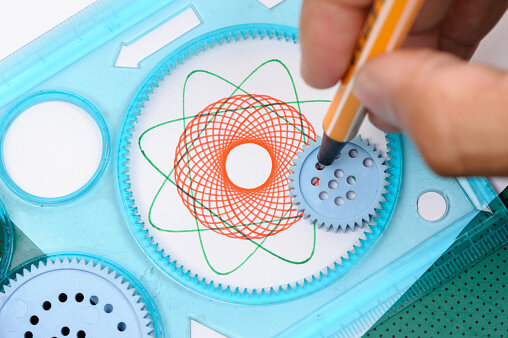The WHY of design
As much as I'd like to be able to say I've got everything figured out, I still manage to come across the occasional creative that can playfully twist my brain like a latex balloon into a wiener dog. This week I had the opportunity to talk with Scott Henderson and we went deep... I mean REAL deep, to explore the WHY of design. You'll have to listen to the full episode for the main course, but here's an appetizer to get you going.
We all want to be good designers.
We want to find the key to making our products fly off the shelf and make everyone who sees it say, "wow, that looks awesome!" Good news my friends! There IS a common element of every compelling design that, when applied, can take anything from zero to hero. We know that every good product functionally works. A Toyota Corolla and a Tesla both "work", but a Tesla has significantly more wow-factor and value over a Corolla. So if the secret sauce isn't in creating a product that works well, there must be something else entirely that evokes emotion and creates appeal. Let's look where function isn't a factor to see what we can learn- abstract art.
Why, when we look at abstract art is one piece "better" than another one?
No static sculpture or painting can be utilized as a tool to accomplish a specific task. It inspires us and fills us with emotion, but it has no utility beyond that sphere of influence. Yet we still have criteria that separates my toddlers spaghetti art from a Picasso. It can't be arbitrary that we gravitate towards one abstraction over another. Scott explains that it's because "...our minds want to experience things with unimpeded flow." Flow is what enables us to create form and geometry in a compelling way that leaves people in awe.
There are a plethora of smarter people out there who can explain flow in greater detail than I can (Scott being one of them) but here's my cliff-note version. There are naturally occurring forms that we can see in the world around us, i.e. a spheres in bubbles, hexagons in beehives, etc. When these top-level shapes we are familiar with start to be overlapped and intersected repeatedly we get some really crazy forms going on. Like a spirograph but infinitely more complex and beautiful. Even organic curves, when intersected strategically yield hard lines (like connected bubbles). These naturally-occurring patterns can be decoded to create complex formulas that are understood mathematically with computers, we just can't fathom all of it with our conscious mind. You can read more about how scientists interpret these patterns in interesting this article.
Whenever we look at something that just... doesn't... feel right, it's likely because some aspect of the design has strayed from what occurs through flow and we're left unfulfilled. We, as integrated elements in nature, are infused with these complex patterns. It's part of our DNA, and if we learn how to instinctually interpret these forms and apply them to our work, our results will instantly improve. THAT is what separates Picasso from the splattered spaghetti on the wall. Your intuition is capable of comprehending these complexities in a way that your conscious mind cannot understand, so finding a way to tap into that natural force will empower you to create breathtaking work that is timeless and memorable. So HOW do you unlock this flow? Listen to this week's episode to hear how Scott does it.
About Scott
Scott Henderson is among the top Industrial Designers working in America today. The product designs Scott has created for his global fortune 500 client base have become best selling industry disruptors. If you browse through his long list of designs, odds are pretty good you’ve owned or used one of his iconic products.
Aside from his world-renown and award-winning work in industrial design, Scott is a consistent generator of unique intellectual property, as evidenced by his portfolio of over 50 patents in the U.S. and Europe for novel innovations in fields as diverse as housewares and home accessories to consumer medical products and electronics. Scott’s work is included in the permanent collection of the Brooklyn Museum, the Cooper Hewitt Smithsonian National Design Museum and the Alessi Museum.Over 90% of Scott’s projects have been mass-produced, a track record few designers can claim. His designs have generated hundreds of millions of dollars in revenues for his clients.




